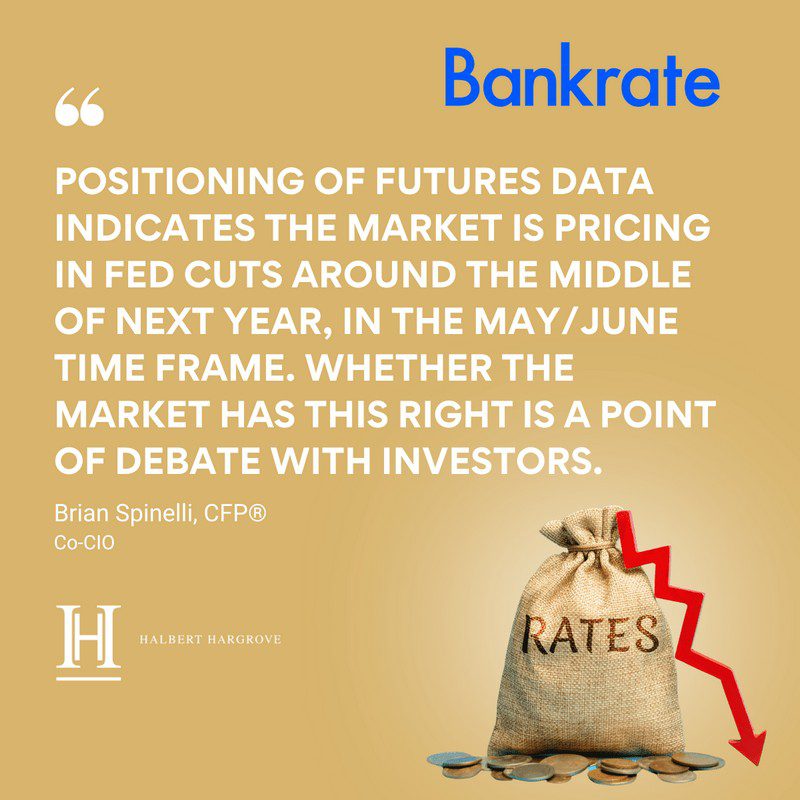By James Royal, Bankrate featuring Brian Spinelli, CFP®, AIF®, Co-Chief Investment Officer
For two years the prospect of higher interest rates has been affecting markets, but the direction of rates has now hit a turning point. In four of its last five meetings, including the one ending December 13, the Federal Reserve has opted to hold rates steady, after raising rates 11 times in this economic cycle. Now, few analysts doubt that the end of rising rates is near, as inflation – which fell to 3.1 percent in November– comes increasingly under control.
Higher rates have been playing out on stocks, cryptocurrency and commodities such as oil over the last two years. But what can investors expect from here and how long will the rate environment impact markets?
Higher rates and recession fears losing effect on the market
While the Fed has already raised rates eleven times during this tightening cycle, it’s easy to spot when markets really sat up and took notice that the central bank wasn’t kidding that it was about to recalibrate monetary policy. It was November 2021 when cryptocurrency and many of the riskiest stocks peaked.
“The stock market will never not worry about future interest rates,” says Steve Azoury, head of Azoury Financial in Troy, Michigan. “The cost of borrowing impacts all areas of investing, purchasing and savings. Just the anticipation of what may happen is enough to cause a stock market reaction.”
And higher rates seem to be frightening investors less these days, as they anticipate the future path of interest rates may have peaked.
“What is obvious is that the Fed wants to bring the inflation target to two percent,” says Dan Raju, CEO of Tradier, a brokerage platform. “Because of this, I do not expect a rate cut in the coming months or even in Q1 2024.”
“Positioning of futures data indicates the market is pricing in Fed cuts around the middle of next year, in the May/June time frame,” says Brian Spinelli, co-chief investment officer at wealth advisor Halbert Hargrove in Long Beach, California. “Whether the market has this right is a point of debate with investors.”
While major stock indexes such as the Standard & Poor’s 500 spent most of 2022 in a funk, they’ve fared well in 2023, and are now sitting near their highest levels of the year. The S&P 500 has risen about 20 percent, while the Nasdaq Composite has climbed around 38 percent.
But what about the highly expected recession? The market’s recent relative strength suggests that investors may be more optimistic – or at least, less pessimistic – than they were in 2022. Many analysts forecast a so-called “soft landing” for the economy, a scenario where inflation declines and unemployment rises some but the economy does not go into a full recession.
“Many economists feel the market, especially in the fourth quarter, has priced in a soft landing,” says Azoury.
“The fear of recession does not appear to be a worry of markets right now and I think that is puzzling many,” says Spinelli.
So after a strong run-up in 2023, there may yet be plenty of room for markets to fall further if the economy worsens significantly.
“When the Fed introduced restrictive…


